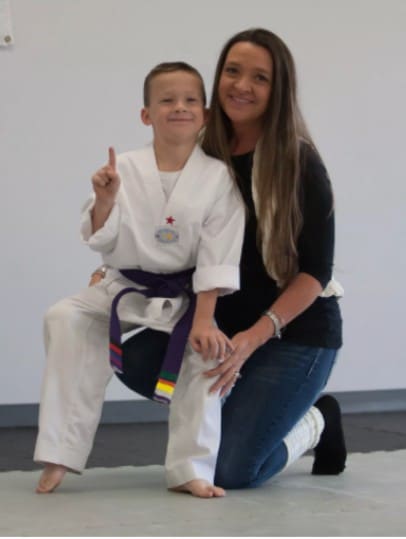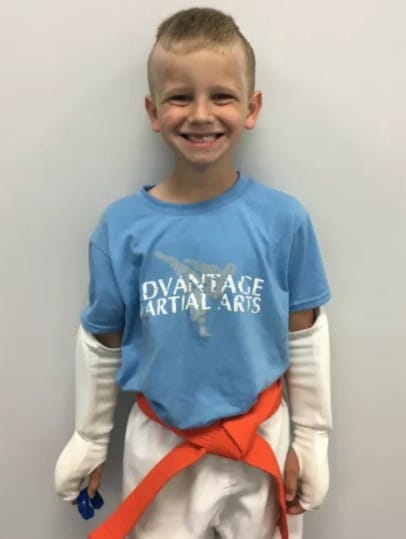One of the many fascinating things about Martial Arts is the duality of purpose and symbolism behind many techniques and practices. Most things have more than one meaning or purpose, from the seemingly simple jun-bi (ready position), through the many purposes of the ki-yap (spirit yell), to how, when, and why we kyung-nye (respect bow). Let’s focus on some of the many different ways students show respect while we are at the do-jang (Tae kwon Do School); you may know many of these, some of them might be new to you, and you may have seen other students doing some of these things without even realizing that they are showing respect. · Put your right hadn't across your heart, and then bow when entering the do-jang and say “good evening ma’am”. This shows respect to the American Flag and lets Master Phillips know you’ve arrived and you’re focused. The greeting is reminiscent of Children’s Home Rule #1…how can the other Children’s Home Rules apply to the do-jang...or to school/work? · Bow to the flags before stepping onto the mat. This allows the responsibilities from outside of the do-jang to slide off your shoulders, making you focused and ready to train. · Always turn your back to the flags and to Master Phillips when tying your belt or fixing your uniform, and take your belt off before you exit the do-jang. You may see black belts seeming to turn from side to side while tying their belts; this is because we’re trying to not face the flags or Master Phillips, which can be challenging if she’s moving around the floor! · Say “Yes ma’am” to Master Phillips and “Yes sir” or “Yes ma’am” to coaches and students of a higher belt. · If there is a class in progress when you arrive, quietly prepare for your class and wait in the back of the do-jang until the prior class is dismissed; this shows respect to the students in that class and helps them to stay focused without added distraction. · The open period between classes should be spent signing in, making sure you have your gear ready, your uniform is tidy, your belt is tied, and figuring out where you should line up. We line up by belt rank order, then by age (oldest to youngest) within each rank; this is how we know who we can ask or look to if we have questions. The tricky part about lining up is when someone that is the same rank is younger but has more tips; the person with more tips is technically a higher rank and lines up in front of the older person. This can cause some confusion, so it’s best to figure out who has the most tips among your belt rank before class starts. Demonstrating this focus and preparedness is a great way to show respect, especially if paired with an enthusiastic “Yes ma’am” and hustling to your spot when your belt color is called to line up. · Speaking of an enthusiastic “Yes ma’am” and hustling, this is a wonderful way to show respect, readiness, and spirit anytime you’re called to do forms, to spar, to kick targets…just about any time you’re asked a question or to do a task, this response will be appropriate. I challenge you to also apply this at home and school! Imagine the response! · Bow to the flags when stepping off the mat. This shows gratitude for your training and signifies you are ready to pick up your outside responsibilities. · Place your hand on your heart, then bow when exiting the do-jang and say “Kam-sa Ham-ni-da Sabonim” (Thank You Very Much Master). This is how you show respect to the American Flag and to Master Phillips at the end of your training session, and it lets Master Phillips know you’re leaving…again, back to Children’s Home Rule #1! So these are some of the ways we can show respect. These are things I have been taught from higher belts, and from Master Phillips and they are things that have taken time to learn and absorb; they are certainly not things that are expected to be learned all at once. There are countless things I didn’t know as a white belt-all the way through black belt, and I’m certain that there are many many more things for me to learn. This brings me back to why this sport is so fascinating; there is always more to learn, and there is always purpose for our actions and behaviors, even if we don’t realize it yet.



